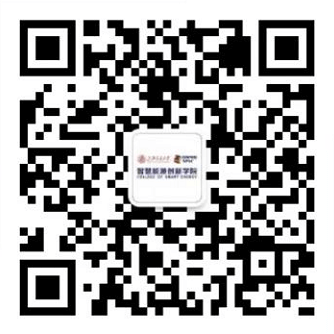Safety Policy
Release time:2023-12-29 views:1486
Lab safety regulation
1.Students should attend the lab class on time; being late or absent without asking for leave would be unacceptable.
2.Students must come prepared for the lab, and being clear about the objectives, principles, and steps of the experiments in advance.
3.Students should abide by the lab rules and follow the instructions of the lab. They should put their backpacks on the shelf and keep quiet. During the experiment, students cannot leave without permission.
4.Students should be informed of the relevant experiment rules and instructed about the instrument and equipment. They should pay attention to the safety during the experiments and not touch any instrument or equipment until instructed. NO one is allowed to carry out any unauthorized experiment, nor will anyone work in the lab alone. Students should not waste water, electricity, or experimental materials. Students should report all kinds of dangerous conditions and injuries once they notice them. Students will be responsible for any violation of the lab regulations.
5.If a piece of equipment does not turn on or off properly, students should report it to the lab instructor immediately.
6.Students should record the original experimental data which cannot be done in pencil or altered. No copied or forged data are acceptable.
7.Eating, chewing gum, drinking, and/or smoking in the laboratory is strictly FORBIDDEN.
8.Students should help the instructor arrange the experimental equipment, turn off the power supply, turn off the tap, and clean the lab room after the work. They should hand in the experimental data to the instructor before leaving.
9.Students should complete their experiment reports on time according to the instructor’s requirements
Circuits lab safety code
1.Smoking, eating, drinking, or “horseplay” are strictly FORBIDDEN in the laboratory.
2.Never work in the laboratory alone.
3.Do NOT operate any equipment without the TAs or lab instructor.
4.Never, ever modify, attach or otherwise change any electrical wiring.
5.The reliable insulation must be applied always.
6.Note and report exposed wires and other potential shock hazards.
7.Disconnect power IMMEDIATELY in the event of leakage or electrical shock.
8.NEVER use open flames in laboratory unless instructed by TAs.
9.Students should read the instruction manual and the experiment content before operation.
10.Have your TAs check and approve your circuit before energizing.
11.Before energizing an experimental circuit, make sure that everyone is clear of the equipment. The person operating the power switch must warn other group members that the circuit is going live.
12.Power must be switched off whenever an experimental circuit is being constructed or disassembled. Any circuit changes must be made with the circuit de-energized.
13.Exercise caution when adjusting energized circuits. All powered circuits are dangerous.
Mechanical engineering lab safety code
1.Wear eye protection all the times in the laboratory. Shoes must completely cover the feet. Sandals are not allowed.
2.NEVER eat, drink, or smoke while working in the laboratory.
3.Never work in the laboratory alone.
4.Do NOT operate any equipment without the TAs or lab instructor.
5.Wear headphones or other devices interfering with hearing is NOT allowed.
6.Please do NOT yell, scream, or make any sudden loud noises that could startle others who are concentrating on their work.
7.Avoid using extension cords whenever possible. If you must use one, obtain a heavy-duty one that is electrically grounded, with its own fuse, and install it safely. Extension cords should NOT go under doors, across aisles, be hung from the ceiling, or plugged into other extension cords.
8.Never, ever modify, attach or otherwise change any electrical wiring.
9.When use the main electrical line (220V) directly for tests, TAs or lab instructor should be closely watching the students during the experiments.
10.The reliable insulation must be applied always.
11.Disconnect power IMMEDIATELY in the events of leakage or electrical shock.
12.NEVER use open flames in the laboratory unless instructed by TA.
13.Students should read the instruction manual and the experiment content before operation.
14.If you cannot decide the scale range for the measurement, start the measurement from high and gradually to reduce the range scale when doing the measuring experiments.
15.Wear safety glasses or face shields when working with hazardous materials and/or equipment (for example, Aluminum, Steel, Material Testing Machine, Wind tunnel Lathe, and Milling Machine, etc.).
16.Follow the correct procedure strictly to use the instrument or equipment.
17.No any debris and other materials on the surface of the station; the fixtures, tools and all the fasteners should be secure.
18.Maintain safe working distance from equipment.
19.All pressurized containers (e.g., gas cylinders) will be fixed with two welded link chains and label all ingredients to show nature and degree of hazard.
20.Use pressure regulators that are equipped with pressure relief devices. Always check the regulator before attaching it to a cylinder.
21.When using compressed air, use only approved nozzles and NEVER direct the air towards any person.
22.If any laboratory equipment is malfunctioning, making strange noises, sparking, smoking, or smells “funny”, get lab instructors or technicians immediately. It is imperative that the lab instructors or technicians knows of any equipment problem.
23.All accidents, no matter how minor, should be reported to the lab instructor/technician who is supervising the laboratory immediately.
24.After completion of the experiment, TAs should collect the used tools/equipment, and return them to the original storage.
25.Inventory and check if the equipment is intact.
26.Record status and abnormal conditions in the lab Experiment Logbook.


 WeChat
WeChat